August 4, 2025 by 100XBuilds Team
Budgeting & Forecasting Guide for Custom Home Builders
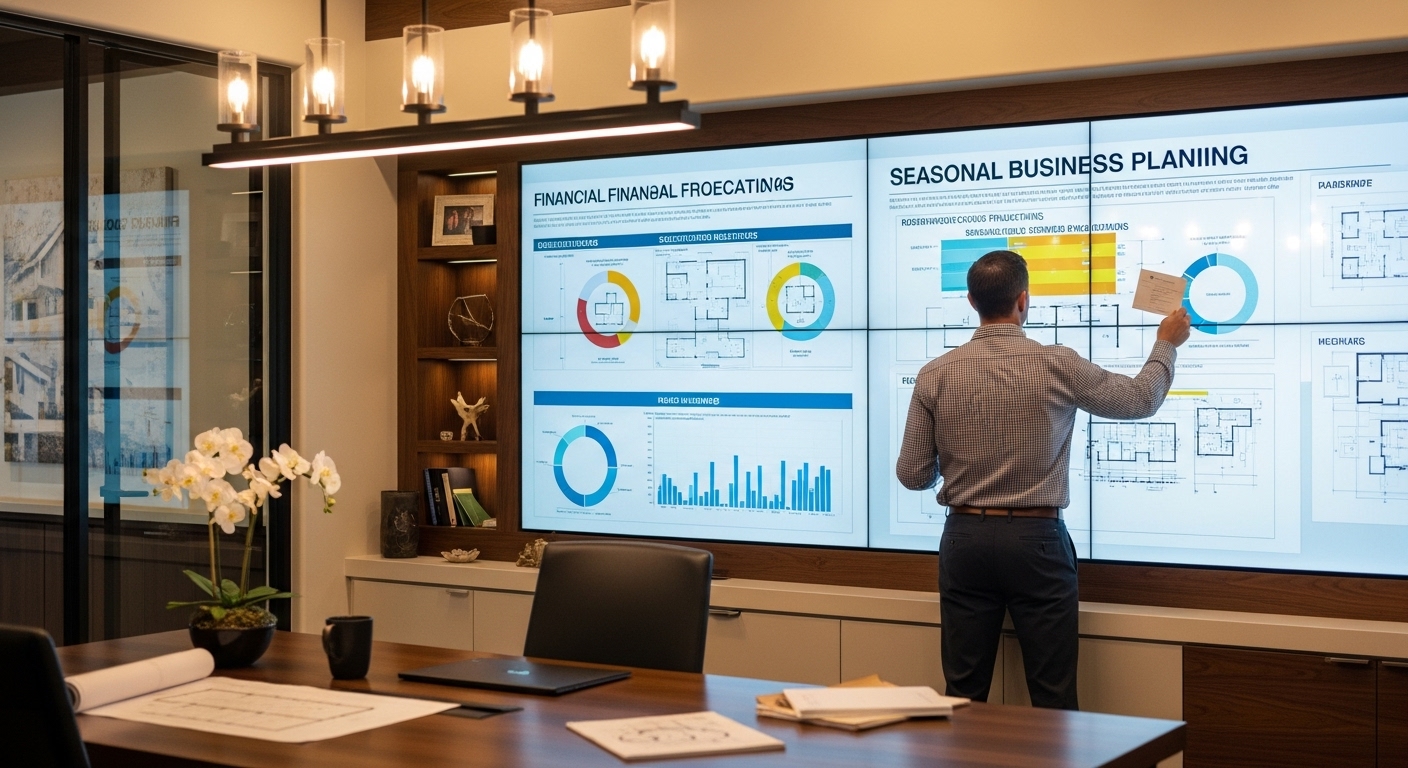
A $12M luxury builder in Colorado increased their annual profit margins by 23% simply by implementing a seasonal forecasting model that accounted for weather delays and material cost fluctuations. The difference? They stopped treating their business like a steady-state operation and started planning like the seasonal, project-based enterprise it actually is.
Most custom home builders approach budgeting like they're running a widget factory—linear projections, steady monthly targets, and generic industry benchmarks. This fundamental misunderstanding of cash flow patterns costs luxury builders an average of $847,000 annually in missed opportunities and inefficient resource allocation.
The Seasonal Reality of Luxury Construction
Custom home building operates on predictable seasonal cycles that traditional budgeting methods completely ignore. Foundation work peaks in late spring, framing dominates summer months, and interior finishes consume fall and winter. Yet most builders create budgets that assume consistent monthly revenue and expenses.
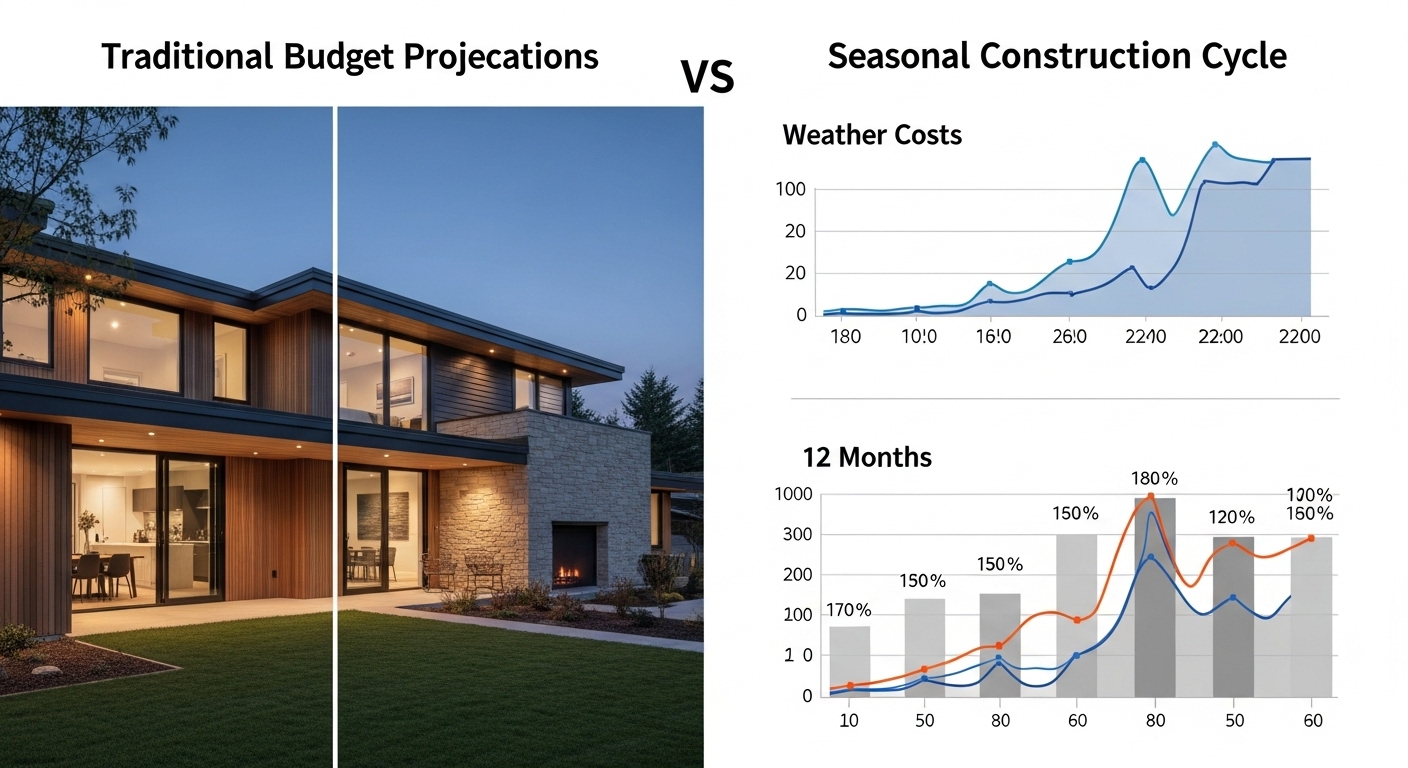
Spring surge preparation: 40% of annual excavation and foundation work occurs between April and June
Summer construction peak: 60% of framing and exterior work happens during optimal weather months
Fall finishing focus: Interior trades and custom millwork dominate September through December
Winter planning period: Project development and permitting activities increase 300% during slow construction months
This seasonal reality creates cash flow patterns that can make or break your annual performance. A $8M builder in North Carolina discovered their traditional budgeting approach was causing them to carry excess labor costs during slow periods while scrambling to find qualified trades during peak seasons.
The 90-Day Rolling Forecast Framework
Successful luxury builders implement a dynamic forecasting system that updates every 30 days with a 90-day forward view. This approach provides the agility needed for project-based businesses while maintaining long-term strategic direction.
Month 1: Execution Focus
Your first month forecast should be locked with 95% accuracy. Every material delivery, labor schedule, and payment milestone should be confirmed and tracked daily.
Daily cash position monitoring: Track actual vs. projected cash flow with $10,000 accuracy
Weekly labor cost analysis: Monitor actual labor hours against budgeted allocations by trade
Material cost variance tracking: Document price changes and delivery delays affecting current projects
Month 2: Adjustment Period
The second month allows for tactical adjustments based on current project performance and emerging market conditions.

Subcontractor performance evaluation: Assess productivity rates and adjust future project timelines
Material cost trend analysis: Identify price movements affecting upcoming purchases
Weather contingency activation: Implement backup plans for seasonal delays
Month 3: Strategic Positioning
Your third month forecast focuses on strategic positioning for upcoming opportunities and challenges.
Pipeline development: Evaluate prospects moving toward contract signing
Resource allocation planning: Prepare for seasonal labor and equipment needs
Market condition assessment: Adjust pricing strategies based on competitive landscape
Project-Based Cash Flow Modeling
Unlike traditional businesses with predictable monthly revenue, custom home builders experience dramatic cash flow variations based on project milestones and seasonal factors. Effective budgeting requires modeling these patterns at the individual project level.
The Milestone Payment Structure
Most luxury custom homes follow a predictable payment schedule that creates specific cash flow patterns:
Contract signing: 10% of total project value
Foundation completion: 15% of total project value
Framing completion: 20% of total project value
Mechanical rough-in: 15% of total project value
Drywall completion: 15% of total project value
Final completion: 25% of total project value
A $15M builder in Texas uses this milestone structure to create precise 18-month cash flow projections for their entire pipeline. They discovered that traditional monthly budgeting was causing them to miss seasonal financing opportunities worth $2.3M annually.
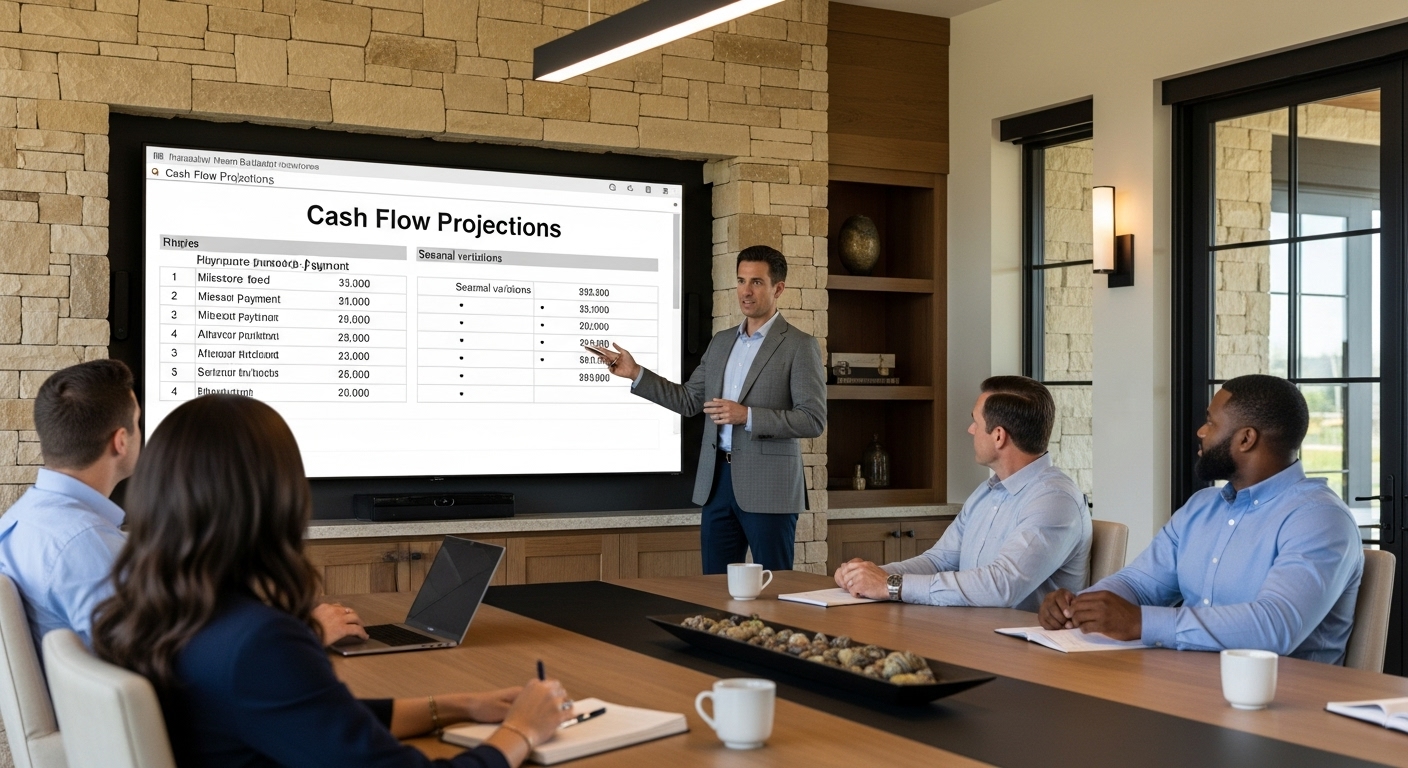
Managing the Construction Loan Float
The gap between project expenses and milestone payments creates a financing requirement that varies dramatically throughout the construction cycle. Smart builders model this "float" requirement for each project and aggregate it across their entire pipeline.
Early stage float: Highest during site preparation and foundation work
Mid-construction balance: Stabilizes during framing and mechanical phases
Finish stage compression: Expenses often exceed milestone payments during final phases
Seasonal Cost Management Strategies
Material costs, labor availability, and weather conditions create seasonal expense patterns that require specific budgeting approaches. Builders who master these patterns consistently outperform their competitors by 15-20% annually.
Material Cost Seasonality
Lumber prices typically peak in spring and early summer, while concrete costs remain relatively stable. Steel and specialty materials follow different patterns based on manufacturing cycles and transportation costs.
Q1 material strategy: Lock in lumber prices before spring surge
Q2 procurement focus: Secure specialty items with long lead times
Q3 inventory management: Balance carrying costs against price volatility
Q4 strategic purchasing: Take advantage of year-end supplier incentives
Labor Market Dynamics
The skilled trades market experiences predictable seasonal fluctuations that directly impact project costs and timelines.
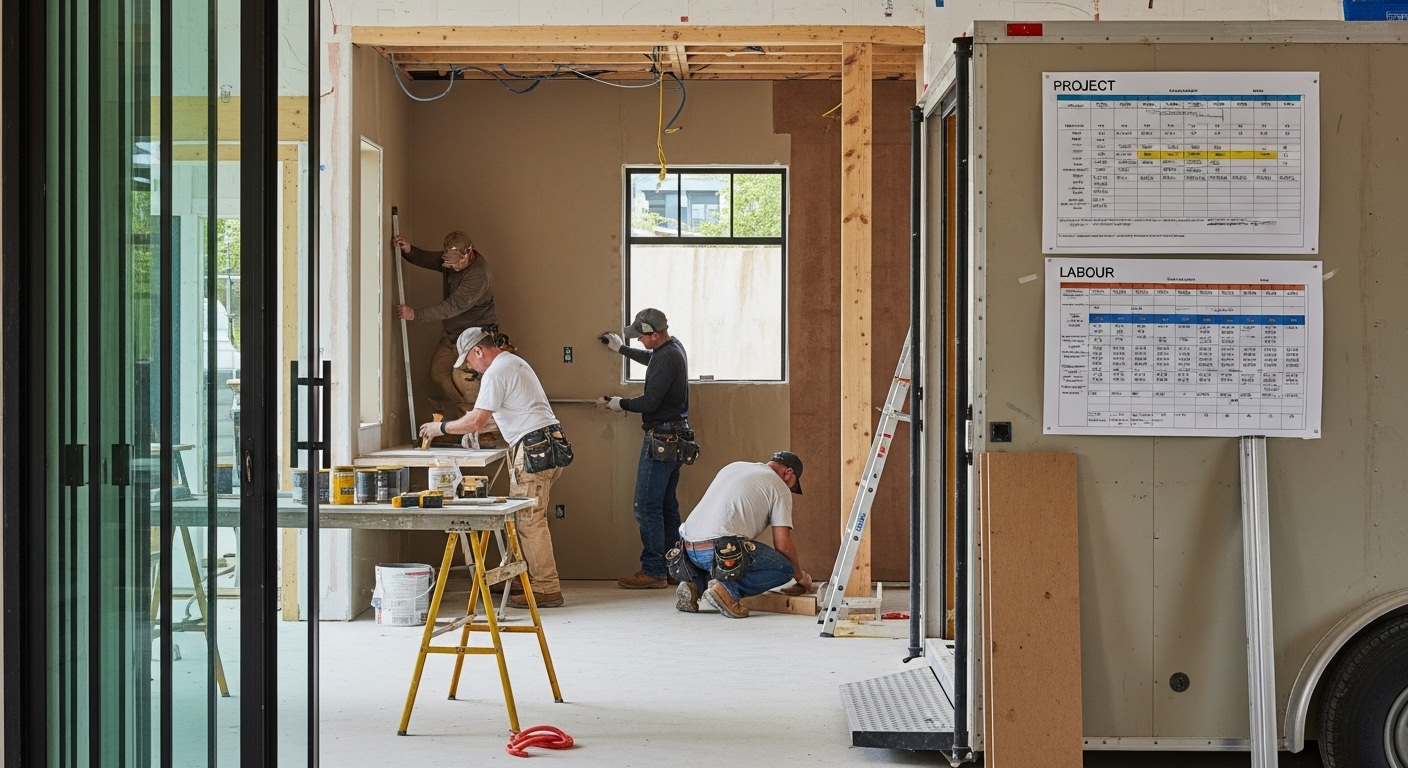
Spring labor shortage: Framers and excavation crews command premium rates
Summer peak demand: All trades experience increased pricing pressure
Fall availability improvement: Interior trades become more competitive
Winter planning opportunity: Secure preferred subcontractors for following year
A $20M builder in California implemented seasonal labor contracting that reduced their annual labor costs by $340,000 while improving project completion reliability.
Technology Integration for Real-Time Forecasting
Modern budgeting and forecasting requires integration between project management, accounting, and customer relationship management systems. This integration provides the real-time data necessary for accurate financial planning.
Essential System Connections
Project management to accounting: Automatic cost tracking and budget variance reporting
CRM to cash flow modeling: Pipeline probability weighting for revenue forecasting
Supplier systems to procurement planning: Real-time material cost and availability data
Weather services to timeline adjustment: Automatic schedule modifications based on forecast conditions
Key Performance Indicators for Builders
Traditional business KPIs don't capture the unique dynamics of custom home building. Successful builders track metrics specific to their industry and business model.
Pipeline velocity: Average time from lead to contract signing
Project margin progression: Gross margin tracking throughout construction phases
Cash conversion cycle: Time from project start to final payment collection
Seasonal efficiency ratios: Productivity comparisons across different times of year
Risk Management Through Scenario Planning
Luxury custom home building involves significant financial risks that require systematic planning and mitigation strategies. Effective budgeting includes multiple scenarios that account for various risk factors.
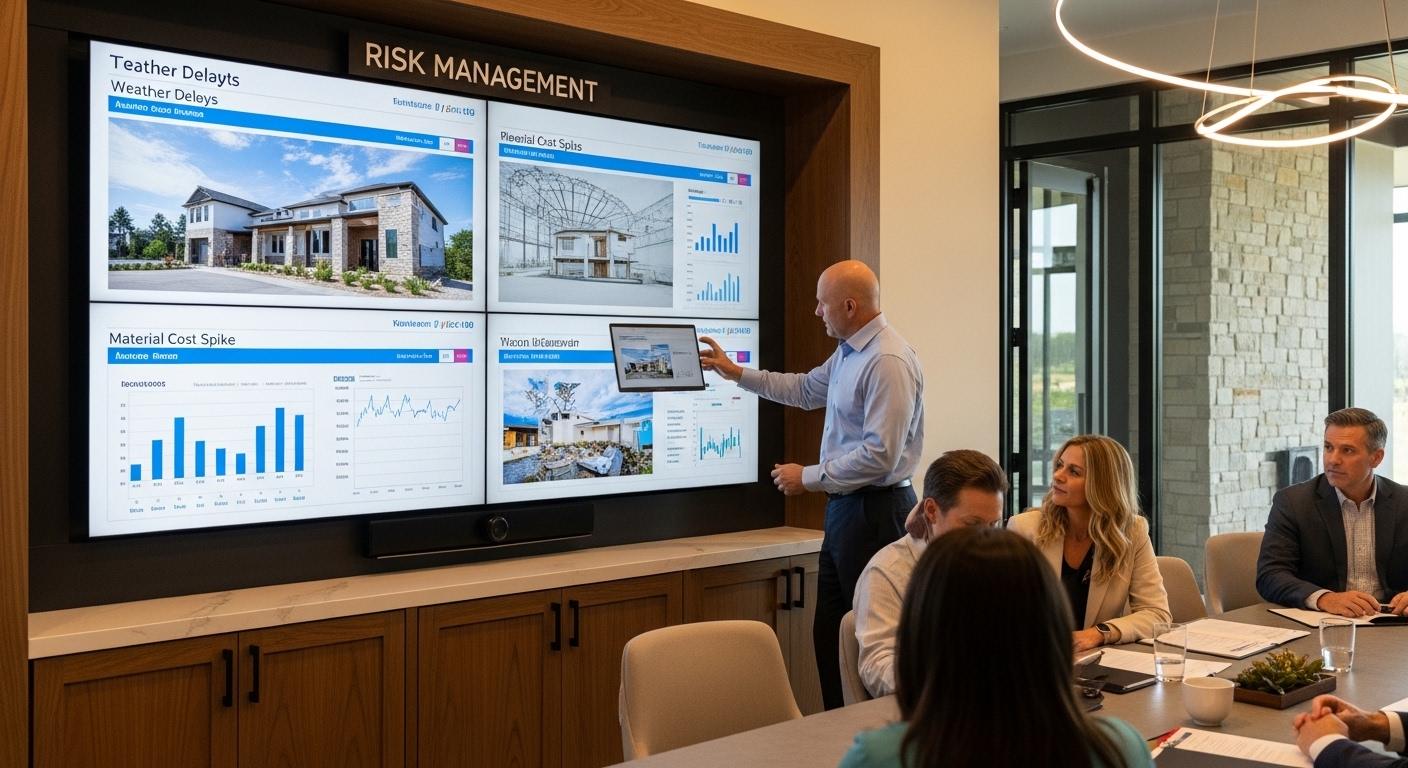
Weather Risk Scenarios
Mild weather advantage: 15% faster project completion, reduced heating costs
Severe weather delays: 25% timeline extension, increased temporary protection costs
Extended winter conditions: Labor shortage premiums, material storage requirements
Market Condition Variables
Rising interest rates: Reduced buyer qualification, extended sales cycles
Material cost inflation: Margin compression, change order negotiations
Labor shortage intensification: Premium wage requirements, extended timelines
Client-Specific Risk Factors
Change order propensity: Historical client behavior patterns affecting project profitability
Payment reliability: Credit assessment impact on cash flow planning
Decision-making speed: Client responsiveness affecting project timeline efficiency
Annual Budget Development Process
Creating an effective annual budget for a custom home builder requires a systematic approach that accounts for seasonal variations, project pipeline development, and market condition changes.
Quarter 1: Foundation Setting
The first quarter establishes the foundation for annual performance through careful planning and resource allocation.
Pipeline assessment: Evaluate all prospects and their probability of conversion
Resource planning: Determine optimal staffing levels for anticipated project load
Market analysis: Assess competitive conditions and pricing opportunities
Quarter 2: Execution Optimization
Second quarter focuses on optimizing execution of planned projects while maintaining pipeline development.
Project delivery excellence: Ensure on-time, on-budget completion of active projects
Quality control systems: Implement processes that reduce callbacks and warranty costs
Subcontractor relationship management: Strengthen partnerships with key trades
Quarter 3: Performance Analysis
Third quarter provides the opportunity to analyze year-to-date performance and make strategic adjustments.
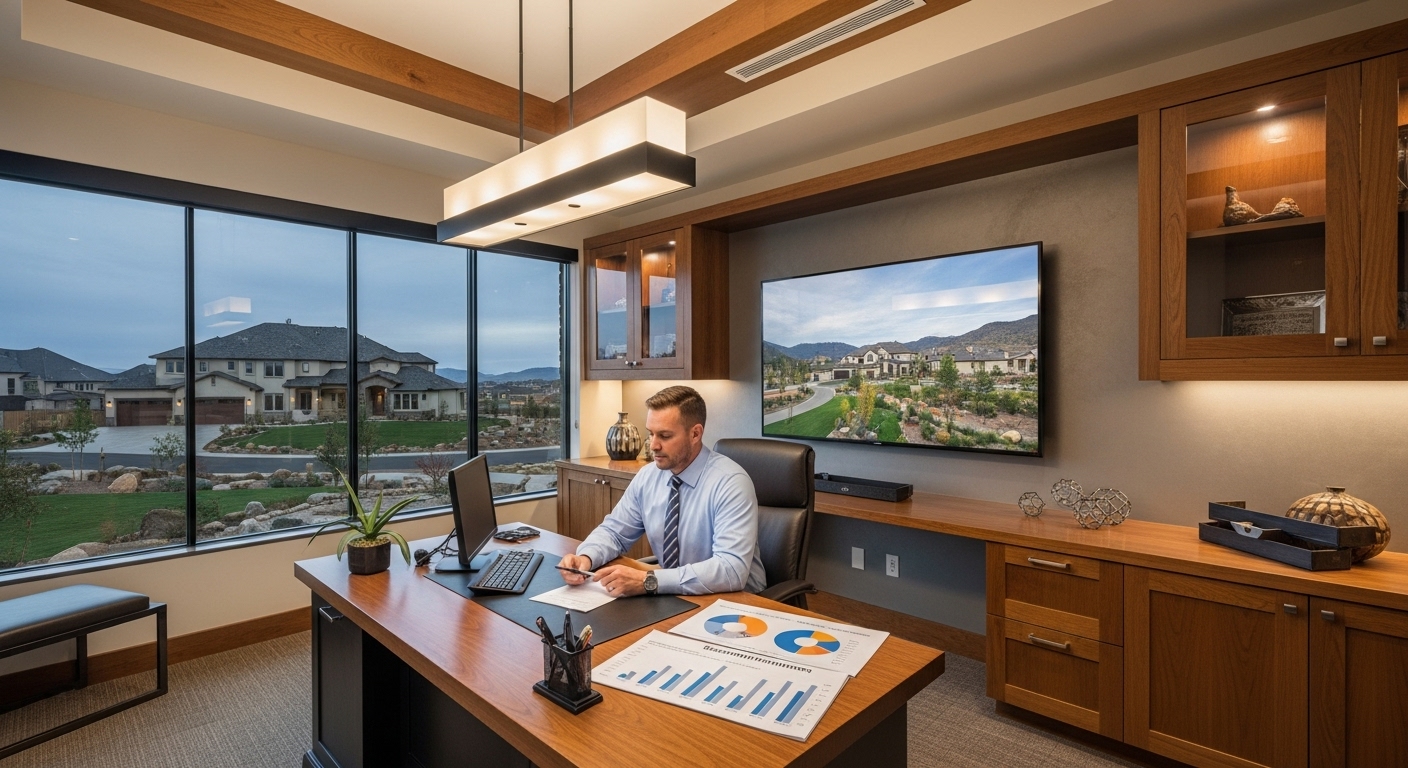
Margin analysis: Identify projects and phases with highest profitability
Efficiency improvements: Implement process changes based on performance data
Market positioning: Adjust pricing and marketing strategies for Q4 and following year
Quarter 4: Strategic Planning
Fourth quarter combines project completion focus with strategic planning for the following year.
Pipeline development: Intensify sales and marketing efforts for next year's projects
Annual performance review: Comprehensive analysis of all financial and operational metrics
Strategic planning: Develop growth strategies and resource requirements for following year
Advanced Forecasting Techniques
Sophisticated builders use advanced forecasting techniques that go beyond simple linear projections to account for the complex variables affecting custom home construction.
Monte Carlo Simulation for Project Outcomes
This statistical technique uses probability distributions to model various project outcomes and their financial impact.
Timeline variability: Model the probability of various completion dates based on historical data
Cost variance analysis: Predict the range of possible project costs considering material and labor fluctuations
Profit margin scenarios: Calculate the probability of achieving target margins under different conditions
Regression Analysis for Market Trends
Historical data analysis helps identify patterns and relationships that improve forecasting accuracy.
Seasonal correlation analysis: Quantify the relationship between weather patterns and project performance
Economic indicator impact: Measure how broader economic conditions affect luxury home demand
Material cost prediction: Use commodity market data to forecast construction material expenses
Implementation Roadmap
Successfully implementing a comprehensive budgeting and forecasting system requires a systematic approach that builds capability over time.
Phase 1: Data Foundation (Months 1-2)
Historical data compilation: Gather 3+ years of project and financial data
System integration planning: Identify technology requirements and implementation sequence
Team training preparation: Develop training materials and schedules for key personnel
Phase 2: Basic Implementation (Months 3-4)
90-day rolling forecast launch: Begin monthly forecasting cycles with basic metrics
Project milestone tracking: Implement systematic project progress and cost monitoring
Seasonal planning introduction: Start incorporating weather and market seasonality into planning
Phase 3: Advanced Capabilities (Months 5-6)
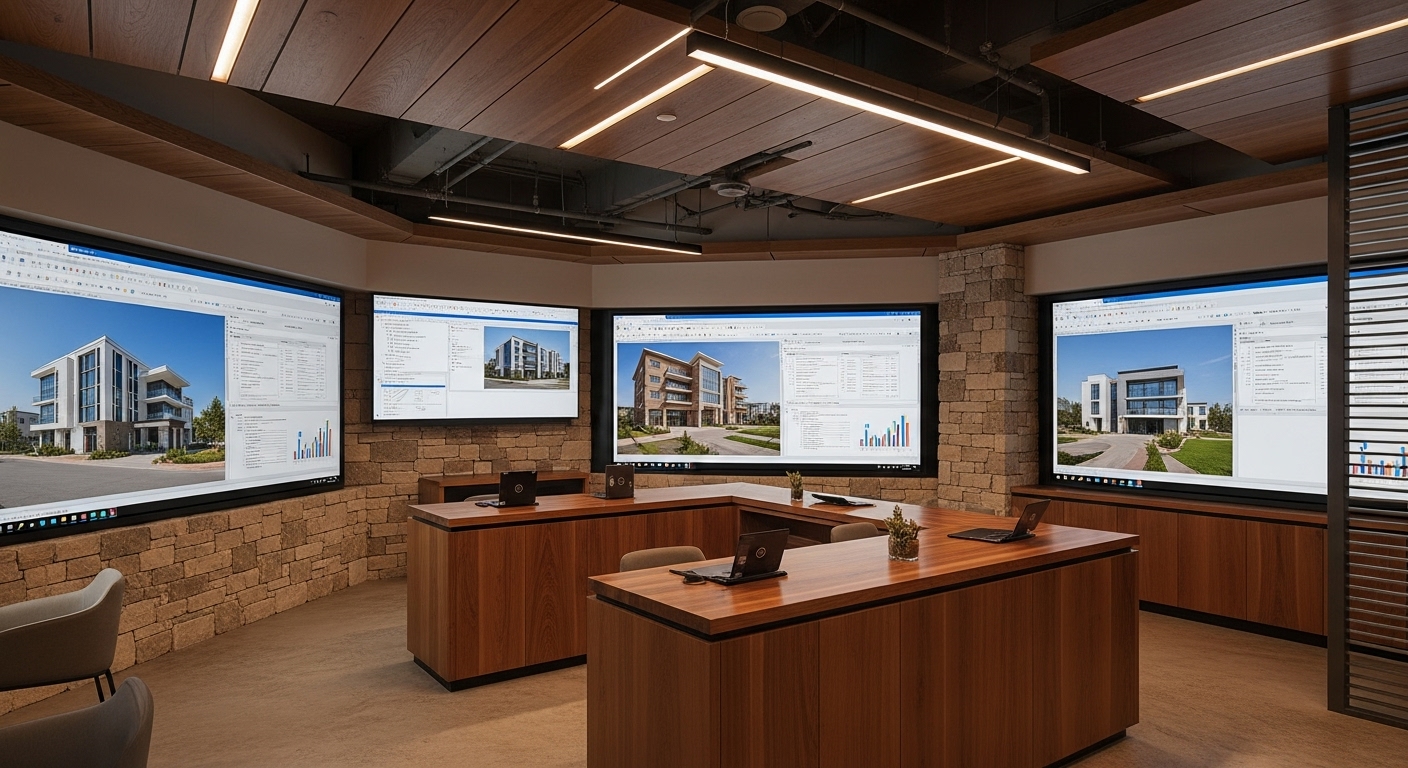
Scenario planning deployment: Develop multiple forecast scenarios for different market conditions
Advanced analytics integration: Implement predictive modeling and trend analysis capabilities
Performance optimization: Fine-tune processes based on initial implementation results
The builders who master seasonal budgeting and forecasting consistently outperform their competitors by 20-30% annually. They avoid the cash flow crises that plague reactive builders and capitalize on opportunities that others miss due to poor planning.
Your luxury custom home building business deserves financial planning that matches its sophistication and complexity. The seasonal nature of construction, the project-based cash flows, and the high-value transactions require specialized approaches that generic business budgeting simply cannot provide.
Ready to transform your financial planning from reactive to strategic? Contact 100XBuilds today to discover how our specialized budgeting and forecasting systems have helped luxury builders increase annual profits by an average of $1.2M while reducing financial stress and improving cash flow predictability.
